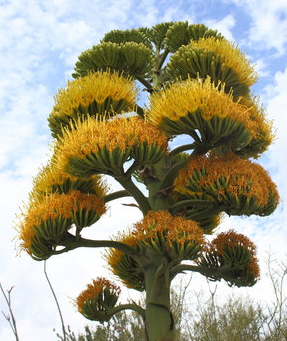Like many other countries, Antigua and Barbuda takes pride in its national symbols, representing the unique identity of the nation. One such symbol is the Antigua and Barbuda National Flower, Agave Karatto, which holds significant cultural, historical, and ecological importance. In this article, we will delve into the captivating world of Agave Karatto and explore its diverse attributes, uses, and conservation efforts.
Introduction to Antigua and Barbuda
Antigua and Barbuda is a sovereign state consisting of two major islands, Antigua and Barbuda, along with a number of smaller islands. Located in the Lesser Antilles, the nation boasts picturesque beaches, vibrant coral reefs, and a warm tropical climate that attracts visitors from around the world. With a population rich in cultural diversity and a history influenced by indigenous tribes and colonial powers, Antigua and Barbuda has a fascinating story to tell.
Importance of National Symbols
National symbols are an integral part of a country’s identity and pride. They serve as visual representations of a nation’s heritage, values, and aspirations. The selection of national symbols, including the national flower, is a significant decision that reflects the uniqueness of a country’s natural environment and cultural heritage.
Overview of Antigua and Barbuda National Flower
Agave Karatto, commonly known as the “Antigua Black” or “Antigua Agave,” is a species of succulent plant native to the Caribbean region, including Antigua and Barbuda. It belongs to the Agavaceae family and is renowned for its striking appearance and versatility.
Significance of Antigua and Barbuda National Flower
In 1985, the Government of Antigua and Barbuda designated Agave Karatto as the national flower. This decision was driven by its historical and cultural significance to the people of Antigua and Barbuda. The selection of Agave Karatto represents the resilience and strength of the nation, as it thrives in arid conditions and can withstand harsh climates.
Characteristics and Appearance of Agave Karatto
Agave Karatto is a perennial plant characterized by its rosette of thick, fleshy leaves that grow in a spiral pattern. The leaves are succulent, spiky, and dark green in color, providing an enchanting contrast against the vibrant blue skies of Antigua and Barbuda. The plant can reach an impressive height of 1 to 2 meters, with some varieties even taller.
Native Habitat and Cultivation
Agave Karatto is native to the rocky coastal areas of Antigua and Barbuda, where it thrives in well-drained soils and full sun exposure. Due to its adaptability and resistance to drought, it can also be found in other Caribbean islands with similar climatic conditions. In recent years, efforts have been made to cultivate Agave Karatto in gardens and nurseries, allowing it to be appreciated by residents and visitors alike.
Medicinal and Cultural Uses of Agave Karatto
The Agave Karatto plant has been utilized by the people of Antigua and Barbuda for various purposes throughout history. One of its notable uses is in traditional medicine. The sap extracted from the plant’s leaves, known as “aloe,” is believed to have healing properties and is used to treat burns, cuts, and skin ailments. Additionally, the fibers from Agave Karatto have been used to create ropes, baskets, and handicrafts, showcasing the plant’s cultural significance.
Conservation Efforts and Challenges
While Agave Karatto holds cultural and historical significance, its survival faces certain challenges. The increasing urbanization, habitat destruction, and climate change pose threats to the natural habitats of this plant. Recognizing the importance of preserving this national symbol, conservation efforts have been initiated by both the government and environmental organizations. These efforts include raising awareness, promoting sustainable cultivation, and implementing measures to protect the plant and its habitat.
Interesting Facts about Antigua and Barbuda National Flower
- Agave Karatto is a flowering plant that blooms only once in its lifetime, typically after 10 to 30 years of growth.
- The plant’s tall flower stalk can reach a height of 6 to 8 meters and is adorned with clusters of yellow flowers, attracting pollinators such as bees and butterflies.
- Agave Karatto is also known for its role in the production of a distilled beverage called “aguardiente” or “Antigua rum,” which is derived from the plant’s fermented sap.
Conclusion
In conclusion, Agave Karatto holds a special place as the national flower of Antigua and Barbuda. Its unique characteristics, cultural significance, and medicinal uses make it a cherished symbol of the nation’s heritage. However, conservation efforts are crucial to ensure the survival of this remarkable plant in the face of environmental challenges. By appreciating and protecting Agave Karatto, we can honor the natural beauty and cultural legacy of Antigua and Barbuda.
FAQs
Q1. Is Agave Karatto endemic to Antigua and Barbuda?
No, Agave Karatto is not endemic to Antigua and Barbuda. It is found in other Caribbean islands with similar climatic conditions as well.
Q2. Can Agave Karatto be grown in other regions outside the Caribbean?
Agave Karatto can be cultivated in regions with a warm tropical climate and well-drained soils. However, it is best suited for coastal areas and may require protection from frost in colder regions.
Q3. What other national symbols does Antigua and Barbuda have?
Apart from Agave Karatto as the national flower, Antigua and Barbuda also has a national bird (the frigatebird) and a national dish (fungi and pepperpot).
Q4. Are there any conservation organizations working to protect Agave Karatto?
Yes, there are several environmental organizations and governmental bodies in Antigua and Barbuda that are actively involved in conservation efforts for Agave Karatto and other native species.
Q5. Can Agave Karatto be grown in home gardens?
Yes, Agave Karatto can be grown in home gardens, provided they receive ample sunlight and have well-drained soil. It is a low-maintenance plant that can add beauty and uniqueness to your garden.
References:
- “Antigua and Barbuda.” Encyclopædia Britannica. Retrieved from https://www.britannica.com/place/Antigua-and-Barbuda
- “National Symbols.” Government of Antigua and Barbuda. Retrieved from https://www.antigua-barbuda.com/national-symbols
- “Agave Karatto.” Caribbean Climate Hub. Retrieved from https://www.caribbeanclimatehub.org/species/agave-karatto
